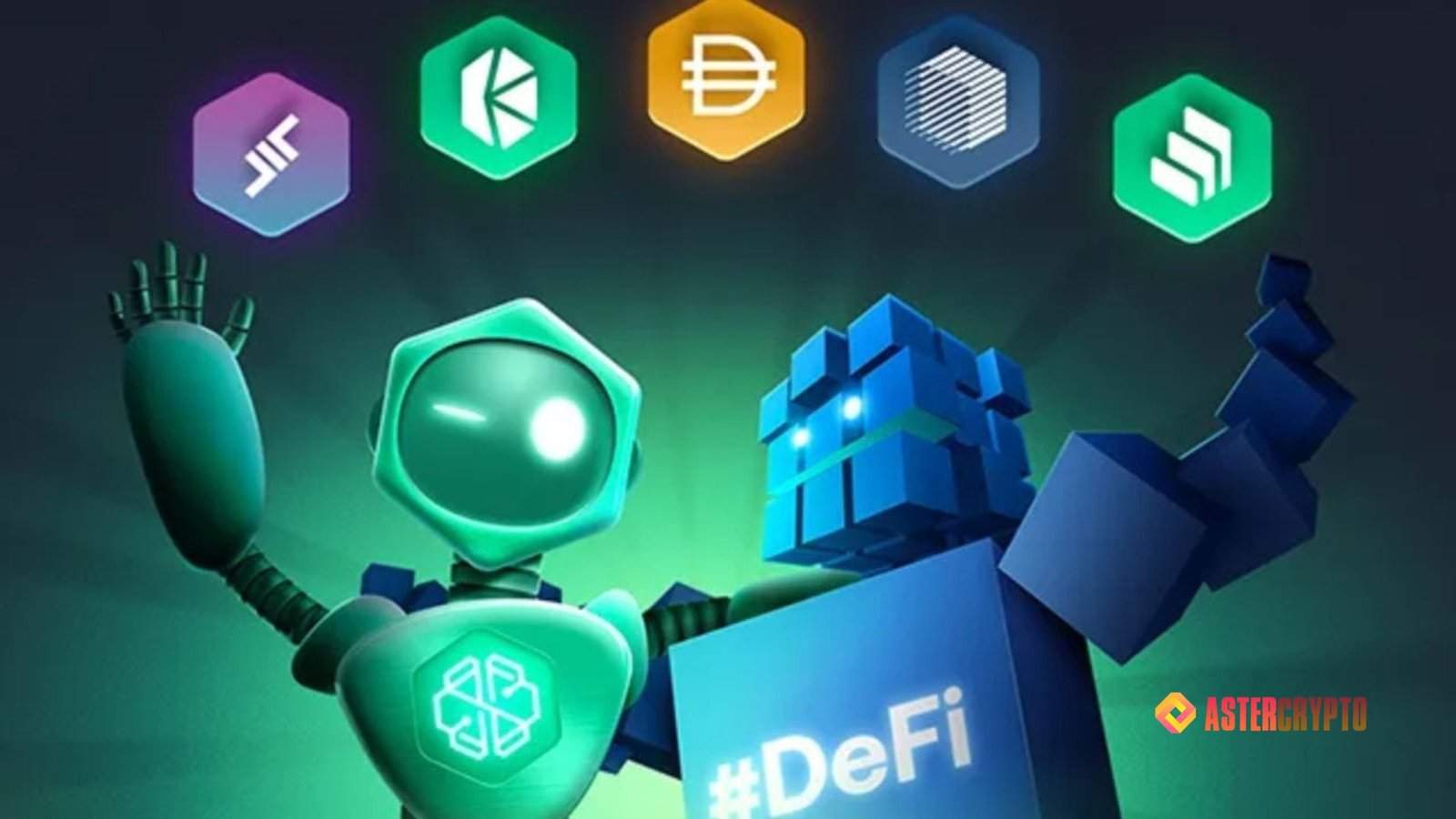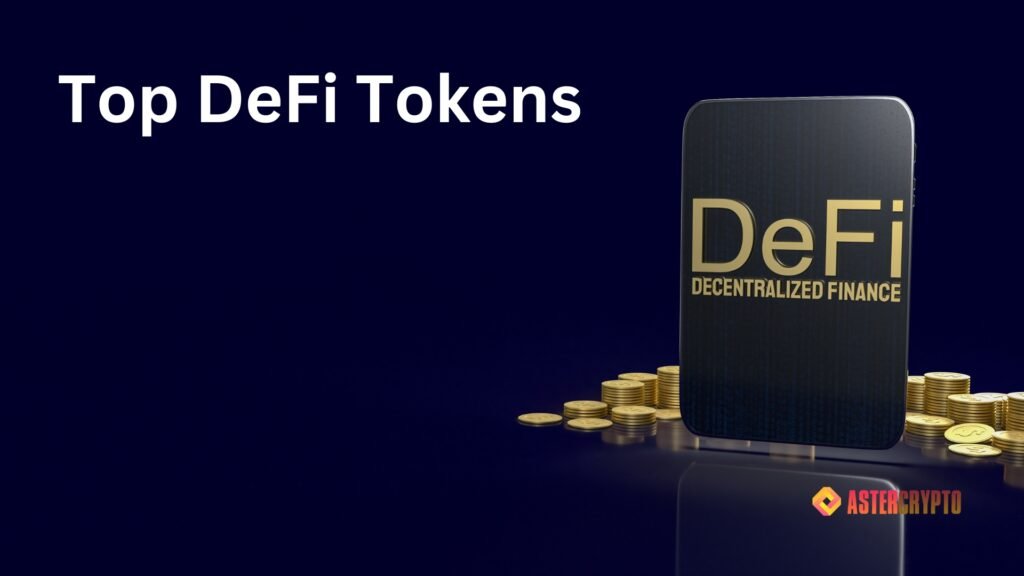Decentralized finance, or DeFi, has emerged as a transformative force in cryptocurrency, reshaping how investors interact with financial systems. This article will delve into the top DeFi tokens, exploring their significance, functionality, and the overall market dynamics that drive their popularity. Understanding these coins is essential for anyone looking to invest in DeFi.
Getting a Grip on DeFi Tokens
DeFi tokens are cryptocurrencies that power decentralized finance applications and protocols. They enable users to trade, lend, or borrow assets without the need for traditional banking institutions. These tokens often operate on blockchain platforms like Ethereum and serve various functions, including governance, utility, and collateralization. The diverse range of DeFi tokens can offer potential rewards and risks, making it crucial for investors to conduct thorough research before deciding to buy DeFi tokens.
The Role of DeFi in the Crypto Market
The rise of decentralized finance has significantly impacted the overall crypto market, introducing innovative financial solutions that challenge traditional banking systems. DeFi platforms allow users to engage in financial activities such as earning interest on deposits, trading assets, and managing loans through smart contracts. As the total value locked (TVL) in DeFi continues to grow, it reflects a burgeoning trust in these decentralized applications, attracting billions of dollars in investments from retail and institutional investors.
Popular DeFi Tokens Overview
Among the most popular DeFi tokens are Aave, Uniswap, Compound, and SushiSwap, each offering unique products and services within the DeFi ecosystem. Aave facilitates lending and borrowing through its innovative protocol, while Uniswap enables users to trade tokens seamlessly on its decentralized exchange. Compound allows users to earn interest on their crypto assets, and SushiSwap builds on the Uniswap model with additional features. These tokens have ranked high by market cap and trading volume, making them key players in the DeFi space.
Market Analysis of Top DeFi Tokens

Current Trends and Price Analysis
The current trends in the DeFi market reflect a growing interest among investors, with many DeFi tokens experiencing significant price fluctuations. Notable coins like Aave and Uniswap have shown resilience even amidst market volatility. Analyzing the price movements of these tokens can provide insights into investor sentiment and the overall health of decentralized finance applications. Moreover, integrating stablecoins like DAI and Tether into DeFi platforms has enhanced liquidity, making it easier for users to trade and lend assets without substantial risk.
Market Capitalization of Leading DeFi Coins
The market capitalization of leading DeFi coins has surged, highlighting their importance within the global crypto space. Tokens such as Compound and Sushiswap are now ranked by market cap among the top cryptocurrencies, showcasing their growing user adoption and trust. The total value locked (TVL) in these decentralized applications indicates a robust investment landscape, with billions of dollars flowing into DeFi protocols. Understanding market capitalization trends can help investors identify potential opportunities and gauge the future trajectory of these DeFi tokens.
Growth of DeFi Tokens Since 2020
Since 2020, the growth of DeFi tokens has been nothing short of explosive. The introduction of innovative financial products and services has attracted a diverse range of investors, from retail to institutional. Platforms built on Ethereum have become the backbone of this growth, enabling decentralized applications to flourish. As a result, many DeFi tokens have seen their prices soar, and their functionalities expand, making them a critical component of the evolving financial landscape. This momentum promises a dynamic future for the DeFi space, increasing the potential for substantial returns.
Investing in DeFi Tokens
How to Buy DeFi Tokens
Buying DeFi tokens involves a few essential steps that investors must follow to ensure a smooth transaction. First, selecting a reputable exchange like Binance or Coinbase is crucial, as they offer a wide range of DeFi coins. After creating an account, users must deposit funds—either cryptocurrencies or fiat currency—into their exchange wallet. Once funded, investors can trade their assets for popular DeFi tokens such as UNI, AAVE, or COMP. It is vital to conduct thorough research on the tokens being purchased to maximize potential rewards while minimizing risks.
Best Exchanges for Trading DeFi Coins
When trading DeFi coins, several exchanges stand out for their user-friendly interfaces, security protocols, and wide selection of tokens. Exchanges like Uniswap and Sushiswap allow users to trade directly from their wallets, promoting a truly decentralized trading experience. Additionally, centralized exchanges such as Binance and Kraken provide liquidity and high trading volumes, which can be advantageous for investors looking to enter or exit positions swiftly. Evaluating the features and fees of various platforms can help investors choose the right exchange for their trading needs.
Evaluating DeFi Projects: What Investors Should Know
Investors must evaluate DeFi ventures to navigate this fast-changing industry. Consider the project’s technology, personnel, roadmap, community engagement, and trust. Tokenomics, like supply and distribution, can also reveal DeFi token value. Understanding smart contract risks and market dynamics can help investors choose from many solutions in decentralized finance.
Future of DeFi and Its Tokens

Predictions for the DeFi Market
The future of decentralized finance (DeFi) tokens appears robust, with analysts predicting a significant expansion in the number of users and the total value locked (TVL) in DeFi applications. As more investors seek alternatives to traditional banking systems, the demand for DeFi products will likely drive innovation and enhance liquidity across various platforms. The rise of cross-chain solutions may also facilitate broader access to DeFi services, allowing users to trade tokens from different blockchain networks seamlessly.
Potential Regulatory Challenges
Despite its rapid growth, the DeFi space faces potential regulatory challenges that could impact its future. Governments worldwide are increasingly scrutinizing DeFi protocols to establish frameworks that ensure consumer protection without stifling innovation. Compliance with anti-money laundering (AML) and know-your-customer (KYC) regulations may compel decentralized applications to adapt, potentially altering their operational dynamics and attracting third-party services for legitimacy.
Innovations in Decentralized Applications and Services
Innovations in decentralized applications (dApps) and services are reshaping the DeFi landscape, with new protocols continuously emerging to meet the evolving needs of users. Developers are increasingly focusing on creating user-friendly interfaces and improving security measures to foster trust among investors. Additionally, integrating artificial intelligence and machine learning could enhance yield optimization strategies and risk assessment, ultimately enriching the overall user experience in the DeFi ecosystem.
The Role of Stablecoins in DeFi
Understanding Stablecoins: Tether and Others
Stablecoins, such as Tether (USDT) and DAI, play a crucial role in the DeFi ecosystem by providing a stable medium of exchange that mitigates the volatility typically associated with cryptocurrencies. These digital assets are pegged to traditional fiat currencies, ensuring their value remains relatively constant. As DeFi continues to expand, stablecoins will likely be integral for facilitating transactions, lending, and trading, helping bridge the gap between traditional and decentralized finance.
How Stablecoins Enhance DeFi Transactions
Stablecoins enhance DeFi transactions by allowing users to trade and lend assets without exposure to significant price fluctuations. This stability enables investors to earn interest on their holdings, participate in liquidity pools, and confidently execute trades. Furthermore, using stablecoins can streamline converting fiat currency into cryptocurrency, making it easier for newcomers to engage with DeFi platforms. By providing a reliable and liquid asset, stablecoins contribute to the overall efficiency of DeFi applications.
The Importance of Trust and Security in Stablecoin Usage
Trust and security are paramount when using stablecoins within the DeFi space. Users must be confident in the underlying assets and the protocols governing these digital currencies. Ensuring transparency through regular audits and maintaining robust security measures against hacks and fraud is essential for fostering investor confidence. As the DeFi sector evolves, the successful integration of stablecoins will depend on their ability to uphold these principles, attracting more users and capital into the ecosystem.
Also Read: Best DeFi Platforms: Leading Finance Ecosystems of 2024

